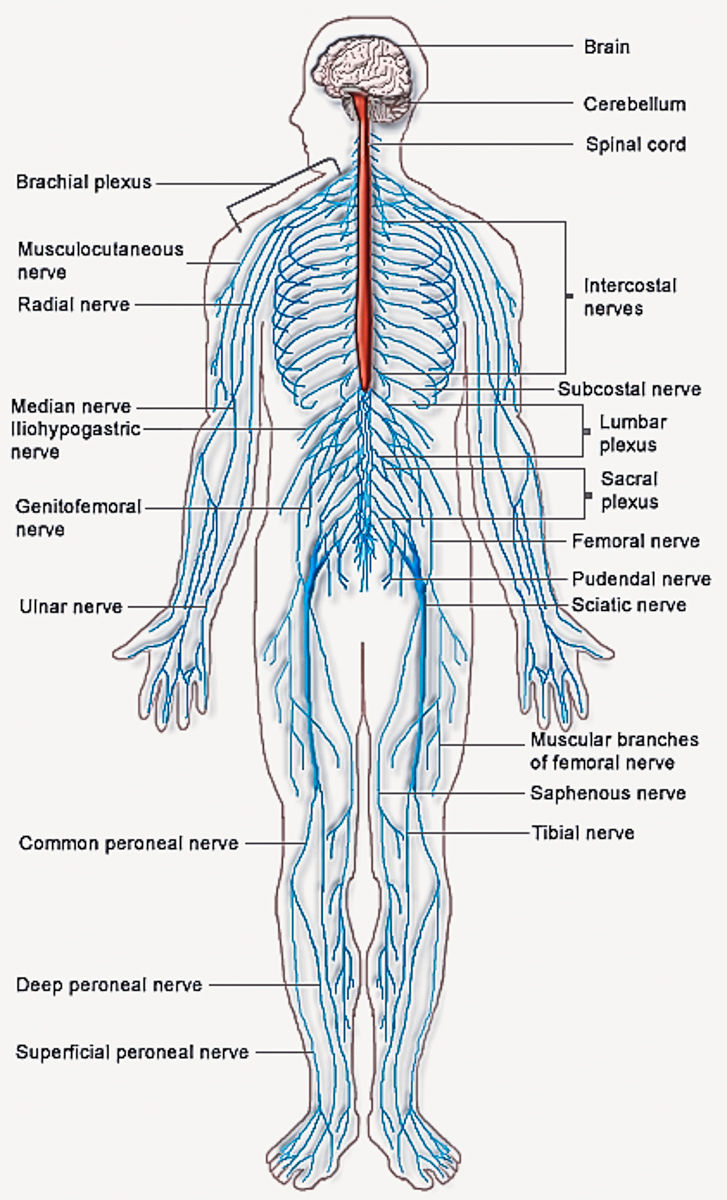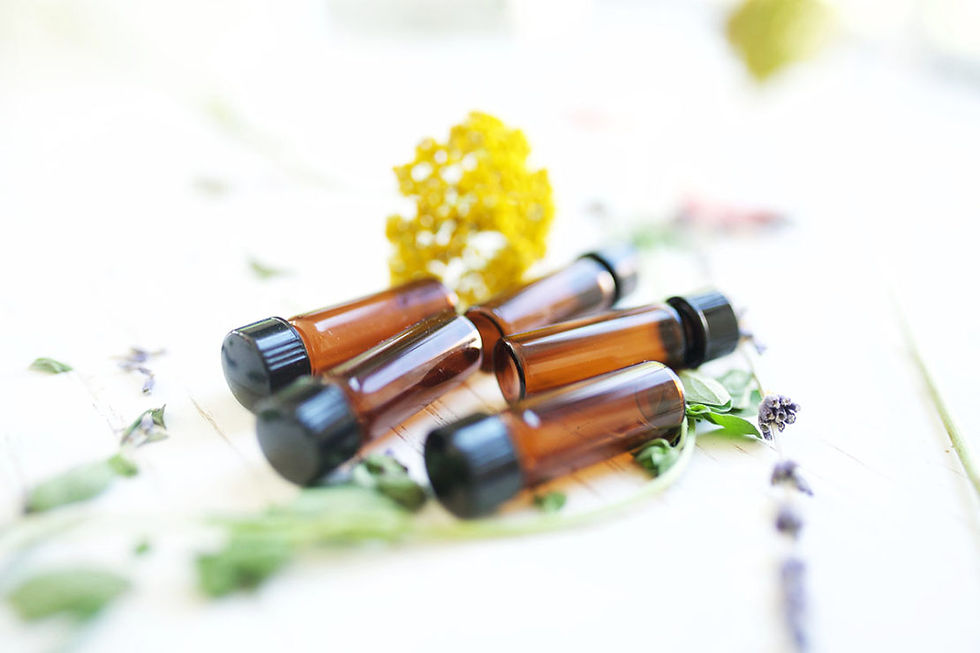Chronic Inflammation: When the Body’s Alarm Bell Gets Stuck On
- Andree Noye
- Aug 11
- 4 min read
By Andrée Noye, MA, Clinical Herbalist and Aromatherapist. Estimated Reading Time: 8 minutes

Inflammation is one of the body’s most important survival tools. In its acute form, with swelling, redness, and heat, it is part of a healthy immune response to infection or injury. When that alarm bell does not shut off, inflammation stops being protective and starts causing damage.
Chronic inflammation works quietly. It often hides behind everyday symptoms, gradually eroding health until the effects are widespread.
When the Immune System Misfires
In a healthy body, inflammation follows a trigger such as a pathogen or tissue injury. With chronic inflammation, the immune system stays active even when there is no external threat. This is the hallmark of autoimmune conditions such as celiac disease, Crohn’s disease, rheumatoid arthritis, Hashimoto’s thyroiditis, and multiple sclerosis. The body begins attacking what it should be protecting.
Autoimmunity is only one pathway. Low-grade, persistent inflammation can also underlie seemingly unrelated symptoms and diagnoses, including:
Neurological: headaches, brain fog, anxiety, poor concentration
Skin: acne, rosacea, eczema, psoriasis, chronic dermatitis
Respiratory: recurring colds, allergies, asthma, chronic sinusitis
Musculoskeletal: joint pain, muscle stiffness, body aches, diagnosed or not
Systemic: unexplained fatigue, anemia, ongoing nutrient deficiencies, especially B12
Digestive: bloating, cramping, irregular bowel movements, or general gut discomfort
French physician Dr. Jean Seignalet described autoimmunity as “any illness involving an immune response that cannot be explained by the presence of pathogens or tumours and which results in damage to specific cells or tissues.” By that standard, many people live with low-grade chronic inflammation without realizing it.
A Clinical Model for Recovery

The goal in working with chronic inflammation is not to suppress it completely. Instead, the focus is on removing aggravators, repairing damaged systems, and restoring healthy immune balance.
1. REMOVE. Reduce or eliminate foods that commonly trigger immune activation. Dairy and gluten are frequent culprits. Where intestinal permeability, sometimes called “leaky gut,” has developed, food proteins can slip into the bloodstream, fuelling the immune response. Refined sugar, industrial seed oils, GM foods, processed additives, pesticides, and hormone- or antibiotic-laden meats can also perpetuate inflammation.
2. REPAIR. Support the gut lining with collagen-rich broths, fibre-rich vegetables and fruits, seeds, sprouts, legumes, and whole grains. A healthy mucosal barrier reduces immune overactivation.
3. REINOCULATE. Rebuild microbial diversity with targeted probiotics and fermented foods such as kimchi, miso, kefir, sauerkraut, or lactofermented vegetables. Balanced gut flora helps retrain immune tolerance.
4. RESOURCE. Draw on tailored herbal support. This may include:
Mucosal healers: Plantago major, Ulmus rubra, Matricaria recutita
Systemic anti-inflammatories: Curcuma longa, Scutellaria lateriflora
Immunomodulators: Withania somnifera, Ganoderma lucidum
Nervous system tonics: Herbs that reduce stress reactivity and promote repair
Because chronic inflammation has many root causes, the choice of botanicals is best guided by a practitioner who can match remedies to your constitution and health history.
Aromatic Allies for an Inflamed Terrain
Essential oils are best known for their antimicrobial qualities, but many also excel in modulating inflammation when matched carefully to a person’s needs.

Forest Medicine: Conifer Oils from Nova Scotia
Essential oils rich in monoterpenes, such as black spruce (Picea mariana) and balsam fir (Abies balsamea), act as adrenal tonics and antispasmodics. Diluted and applied to the adrenal area or sore muscles, they mimic the anti-inflammatory properties of corticosteroids without immune suppression.
Esters: Gentle, Effective Nervines and Anti-inflammatories
Oils containing esters such as lavender (Lavandula angustifolia), ylang-ylang (Cananga odorata), Roman chamomile (Chamaemelum nobile), wintergreen (Gaultheria procumbens), and bay laurel (Laurus nobilis) are calming to both the nervous system and inflamed tissues. Wintergreen’s warming effect is ideal for cold, stiff, or tension-related pain.
Cool Relief: Monoterpenols and Ketones
Peppermint (Mentha × piperita) and lemon eucalyptus (Corymbia citriodora) offer cooling, numbing relief for localized inflammation. They work well as natural alternatives to cold compresses, but should always be diluted to prevent irritation.
Sesquiterpenes: Underestimated Powerhouses
Oils high in sesquiterpenes, including yarrow (Achillea millefolium), German chamomile (Chamomilla recutita), ginger (Zingiber officinale), and goldenrod (Solidago canadensis), offer deep anti-inflammatory action. Goldenrod, abundant in Nova Scotia’s late summer fields, shines in musculoskeletal and urinary inflammation protocols.
A Local Favourite: Pain Relief Oil
At Airmid’s Healing Gardens, one of our most popular blends combines black spruce, balsam fir, wintergreen, lemon eucalyptus, and northern white cedar in a base of St. John’s Wort (Hypericum perforatum)-infused oil. Used topically several times a day, it provides multi-layered relief by easing pain, calming inflammation, and supporting local tissue repair.
Matching Oils to People, Not Just Conditions
Not all inflammation is alike, and neither are essential oils. For example:
Basil (Ocimum basilicum) and anise (Pimpinella anisum) work beautifully for digestive cramping but are not ideal for joint inflammation.
Ketone-rich oils like camphor can be powerful in experienced hands, but may be unsafe for certain individuals.
Some oils mimic “heat,” others mimic “cold,” and using the wrong one can make symptoms worse.
A skilled clinical aromatherapist can match the chemistry of the oil to the needs of your body. The aim is not only comfort but also restoring balance.
The Bottom Line
Chronic inflammation is often silent at first, but its long-term effects are far from harmless. Addressing it means more than symptom suppression. It requires identifying root triggers, repairing the systems most affected, and using plant-based strategies with precision.
When food, herbs, and essential oils are chosen with care and matched to your unique physiology, they become powerful allies in down-regulating inflammation and rebuilding vitality.
The key is not just turning off the alarm bell, but making sure it rings only when it is truly needed.
In care,

Andrée Noye, MA Clinical Herbalist and Aromatherapist



